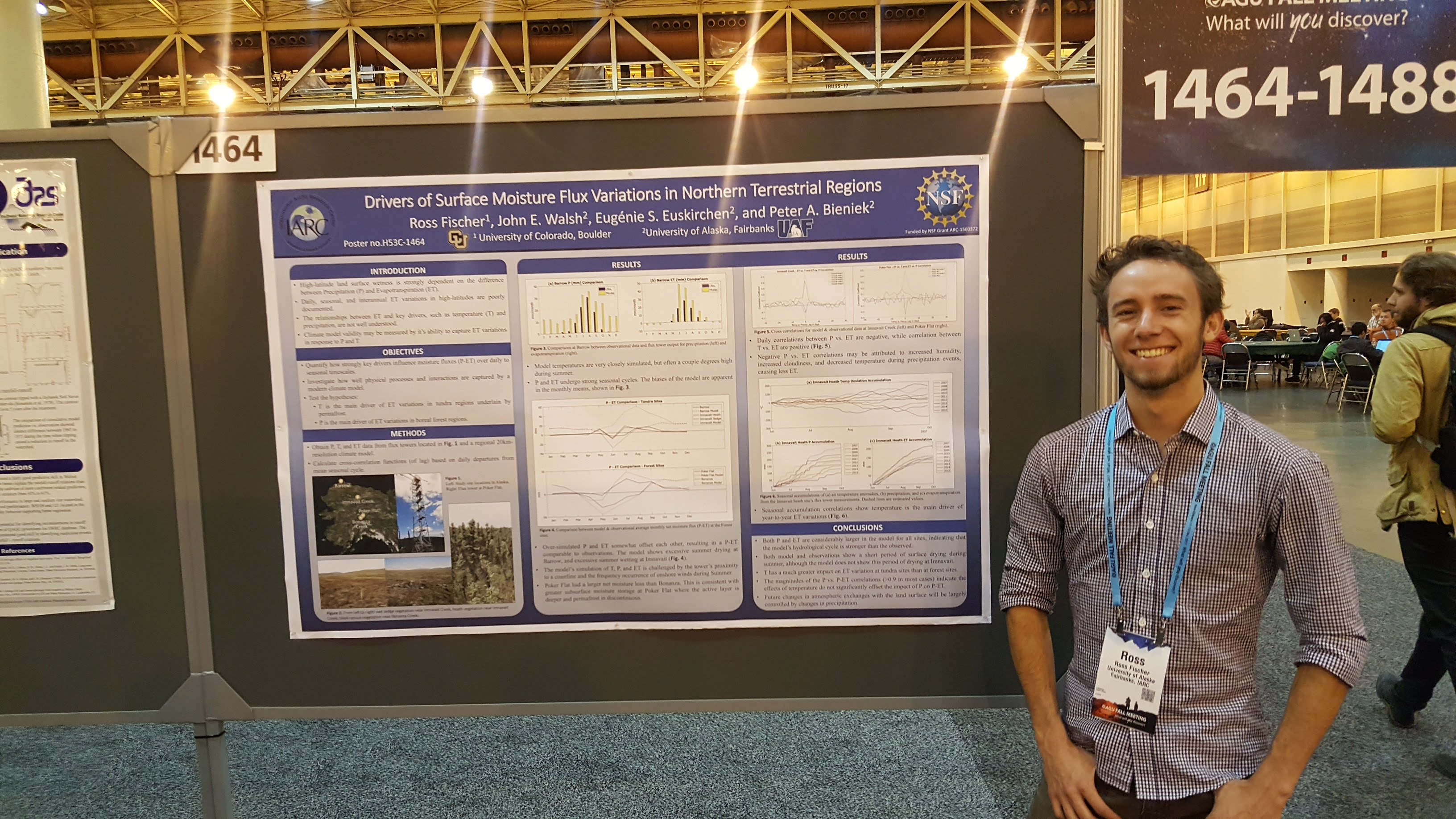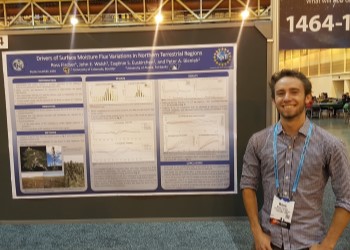International Arctic Research Center
During the Summer of 2017 I acted as a research assistant to the Chief Scientist of the International Arctic Research Center, Dr. John Walsh.
Dr. John Walsh and his colleagues provided background knowledge and datasets used to address the question:
What drives surface moisture variations in the Arctic and, ultimately, the trend towards a wetter or drier Arctic landscape?
Data Analysis and Model Validation
I used Python and MATLAB to write a repository of scripts to analyze both in-situ and climate model output data.
I investigated the primary drivers of ET and compared them with and IARC’s regional climate model. By comparing time-leading and lagging correlations of the drivers of in-situ data with those from the model, I revealed that the model’s hydrologic cycle was over-simulated, leading to excessive precipitation and evapotranspiration.
The bias at some locations was a factor of two or more, pointing to deficiencies in the model formulation.
Climate Data Processing
I processed large amounts of in-situ measurements collected from intensive observatories Across Alaska.
The data included various channels:
- Evapotranspiration (eddy covariance measurements of the latent heat flux)
- Precipitation
- Radiative heat fluxes
- Ground heat fluxes
- Relative humidity
- Wind speed
Paper Authorship and Poster Presentation
These results led to a refereed publication in Atmosphere and Climate Sciences, of which I was the lead author.
I presented a poster on the results at the American Geophysical Union conference, 2017, New Orleans.

Read the Paper:

